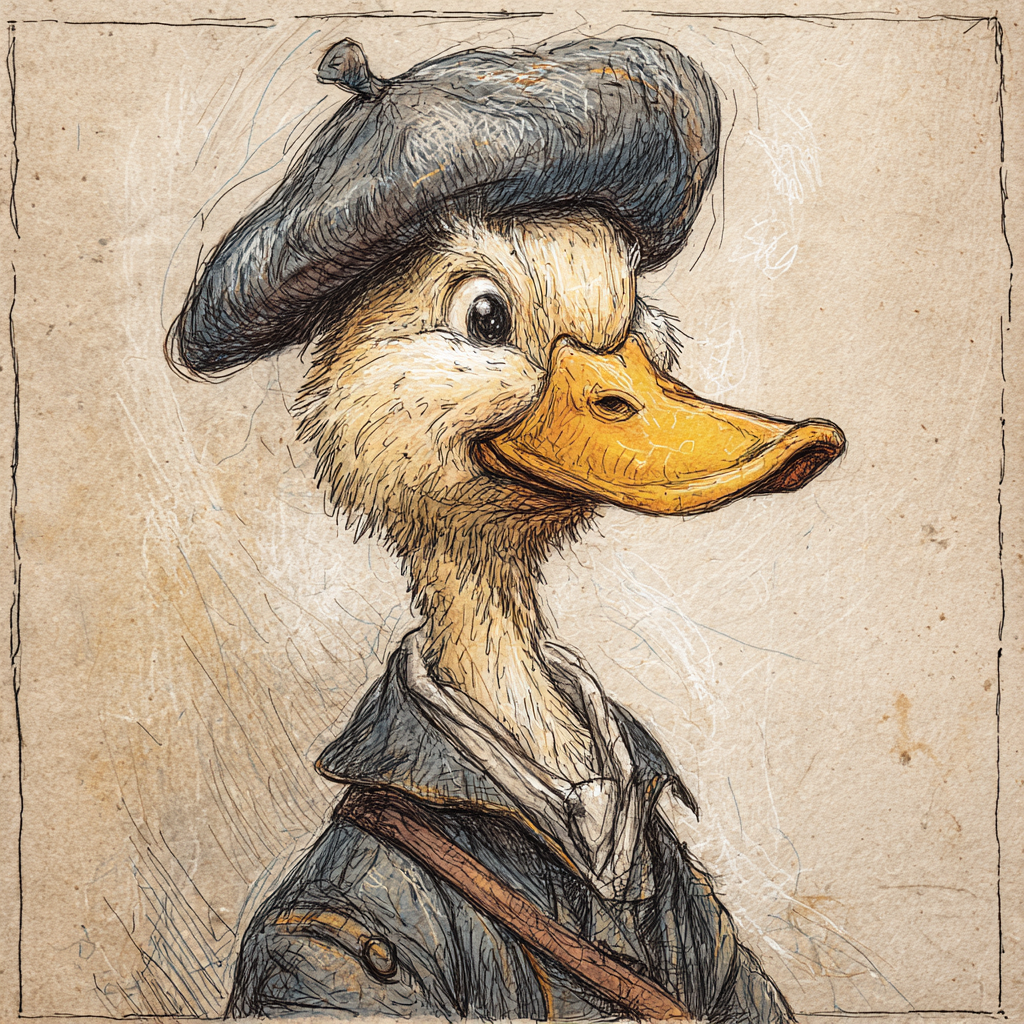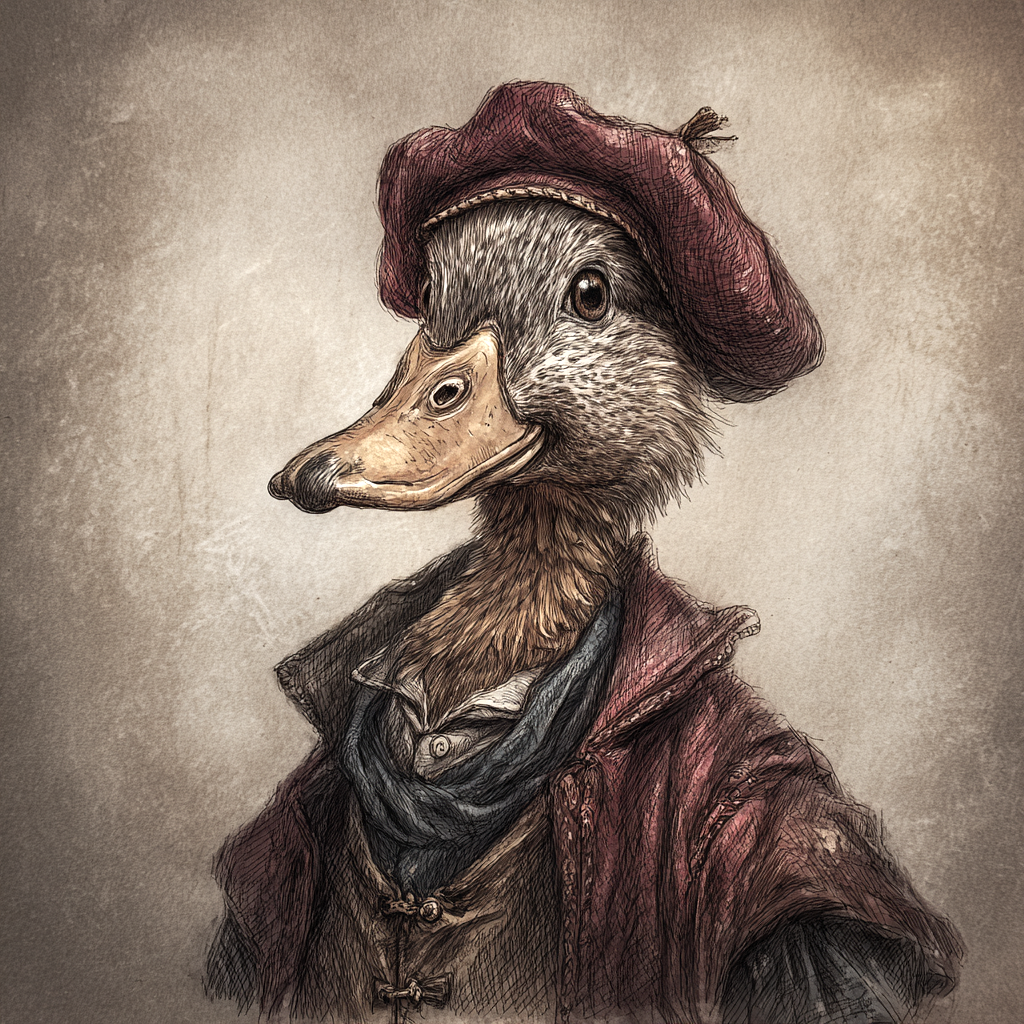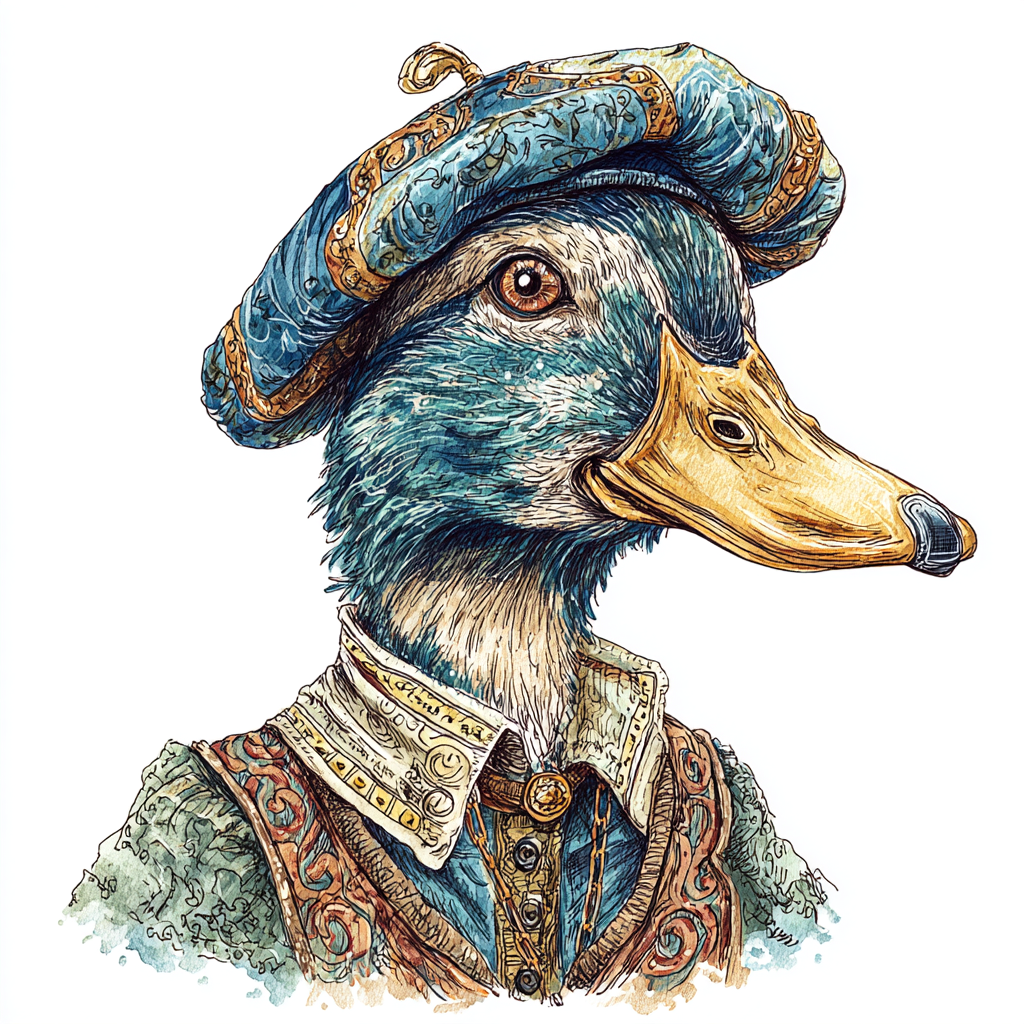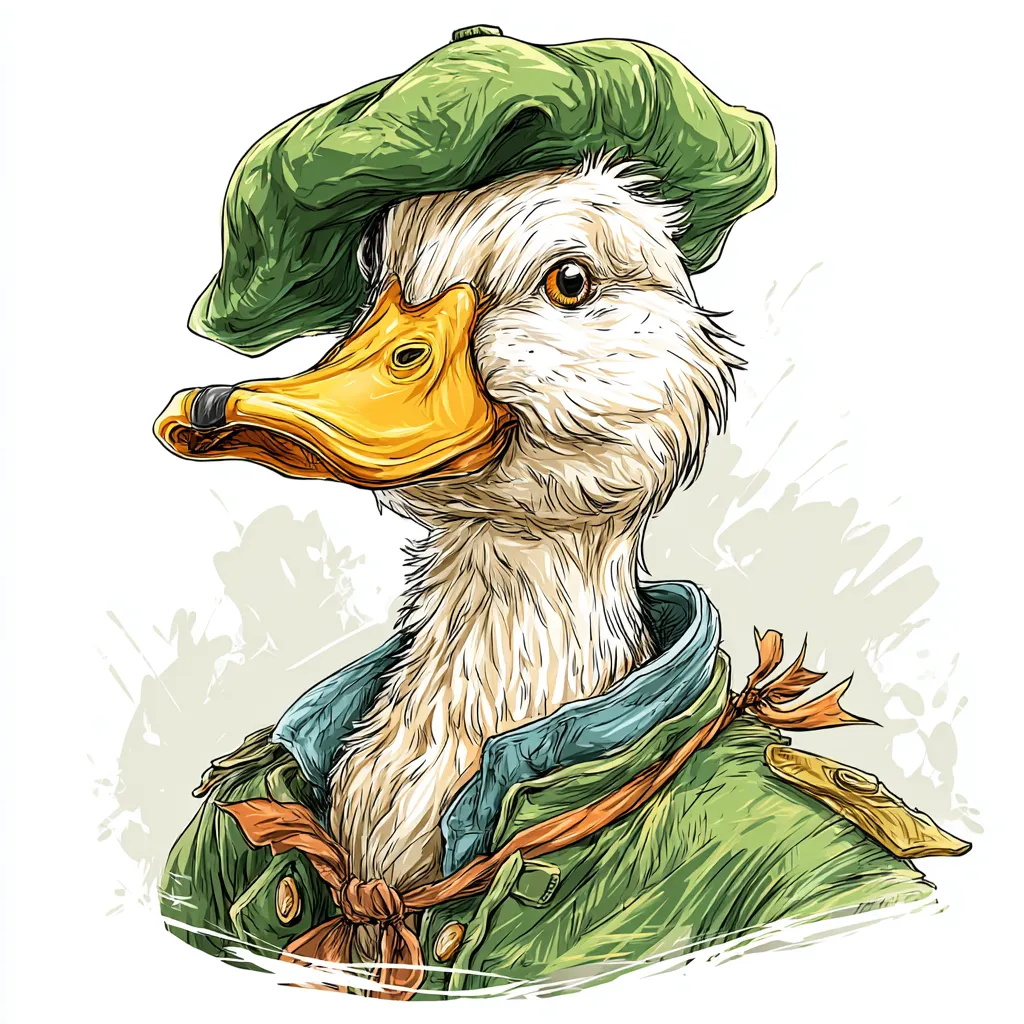Quacker Beret
GM-Info!
Work in progress!
Slightly NSFW!
FEATURED
In Paddlewick, the family beret is more than a practical cap. Worn tilted at a jaunty angle, the round woollen headpiece advertises a duckfolk’s bloodline, social standing, and personal pride. Young ducklings receive their first beret at twelve, a moment eagerly anticipated and celebrated alongside their fledgling ceremonies. Almost every male in the wetlands village can be spotted sporting one, where something as small as a colour shade or the placement of a bead speaks volumes to onlookers.
GM info / spoilers / plot hooks.
History
The fashion began in 2805 PB when Dutrius von Quackenstein returned home on his first shore leave from the Farenian Navy. Villagers poured into Quack Square to greet him and marvelled at his navy beret - a deep blue cap with a silver pin bearing the imperial anchor. Local hatmakers quickly copied the design, but instead of stiff naval cloth, they used soft wetland wool. What started as a novelty spread rapidly; duckfolk fathers commissioned special dyes to mark their sons’ lineage, mothers stitched reeds into the brims for luck, and within a decade no coming-of-age gathering felt complete without a freshly blocked beret.Symbolism of the Item
Every shade, thread, and embellishment on a Paddlewick beret carries meaning decipherable to anyone raised among the reeds. A berry-red hue suggests a family renowned for healing tonics, while muted clay denotes old farming stock. Embroidered patterns speak of feats and duties: a single ripple at the crown honours service in the Mudflat Guard, whereas three concentric rings indicate an elder who has completed a triple term on the village council. Duckfolk lower their berets whenever they cross the threshold of the Church of QUACKS, touching the brim to their bills as a silent invocation of good fortune.Example Designs of Some Duckfolk Families
The von Quackensteins retained the original naval palette, using heavy indigo felt edged with bold silver piping. The Pondwhispers favour a watered silk band dyed pale teal, each cap finished with a lily-seed tassel that sways gently as the wearer walks the boardwalks. Greenshade caps are mossy green with delicate lily-pad appliqué stitched in ochre thread, one pad added for each generation alive. Clearbill headwear is dyed with crushed pearl flakes mixed into blue pigment, giving a soft shimmer under lantern light.Example Patterns of Some Family Ranks
Family hierarchy is stitched directly onto the cloth. Patriarchs and matriarchs weave a thin gold braid around the entire crown, too subtle for visitors yet unmistakable to locals. Firstborn heirs display crossed cattails on the left side, the stalks tipped with tiny bronze seed beads. Second sons sew a single water-drop motif over the rear seam as a mark of dependable support. Adopted relatives tuck a narrow white ribbon inside the sweatband, visible only when the beret is removed in greeting.Price, Availability, and Custom Orders
Basic undyed berets cost three silver pennies and are sold in open baskets at Quack Square every market day. A bespoke cap, tailored in a preferred dye lot with personalised embroidery, begins at one gold piece. Wealthier homes commission entire wardrobes of caps for different seasons - lighter lotus-silk-lined versions for summer and thicker wool felt for winter winds. Exclusive pigments require advance contracts with dyers, and some colours, such as iridescent emerald, are reserved by single households through annual payments to the dyer who guards the recipe.Material and Creation Process of the Beret
Artisans begin by selecting fine wetland wool sheared from hardy marsh sheep, prized for its natural water resistance. The fleece is washed in reed-ash lye, carded, and felted into dense sheets before being soaked in vats of vegetable dye made from lotus petals, pond moss, and reed bark. Once coloured, the cloth is stretched over wooden blocks carved to achieve the signature low crown and soft droop. After drying for two days by slow smouldering peat fires, each beret is trimmed, steamed, and lined with woven rushes to keep the fit snug. Decorative work follows: beads, reeds, feathers, or metal filigree stitched by hand according to the commissioner’s instructions.Most Renowned Creators in Paddlewick
Mayla Softstitch specialises in lotus-silk threadwork that catches lamplight, turning simple caps into statement pieces worn at festivals.
Old Gibb Knothat, once a ship’s sailmaker, still hammers rivets into the rims of working-class berets and refuses payment in anything but fresh bread.
The Reedloom Sisters, Mira and Lysa, dye their wool in barrel-aged vats seasoned with secret herbal mixes that no one else has replicated.
Finnick Brighttint runs a shed behind the market, producing pigments so vibrant that noble messengers ride from distant counties to purchase a single batch.
Greenshade Spindle-Loom is a venerable family workshop renowned for its supple leaf-dyed wool, fine reed-stem piping around each brim, and a marsh-herb lining that stays fresh and crisp whatever the weather.














Enchanting ;)
Here are my Entries for the water continent Ulűri̋qi̋